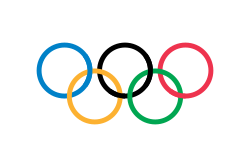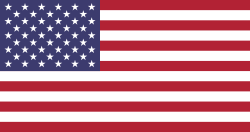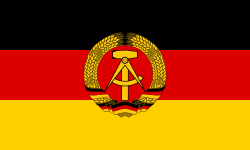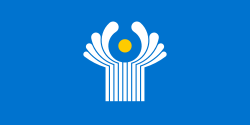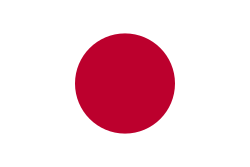Ludowika Jakobssonová
| Ludowika Jakobssonová | |
|---|---|
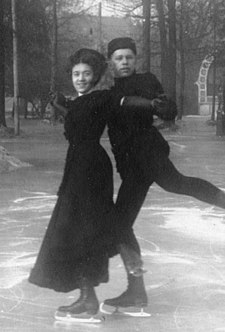 Ludowika a Walter Jakobssonovi (okolo roku 1919) | |
| Stát | |
| Datum narození | 25. července 1884 |
| Místo narození | Postupim |
| Datum úmrtí | 1. listopadu 1968 (ve věku 84 let) |
| Místo úmrtí | Helsinky |
| Výška | 165 cm |
| Partner(ka) | Walter Jakobsson |
| Aktivní období | 1907–1928 |
| Klub | Helsingfors Skridskoklubb |
| Některá data mohou pocházet z datové položky. | |
| Přehled medailí | ||
|---|---|---|
| zlato | LOH 1920 | sportovní dvojice |
| stříbro | ZOH 1924 | sportovní dvojice |
| Mistrovství světa v krasobruslení | ||
| zlato | MS 1911 | sportovní dvojice |
| zlato | MS 1914 | sportovní dvojice |
| zlato | MS 1923 | sportovní dvojice |
| stříbro | MS 1910 | sportovní dvojice |
| stříbro | MS 1912 | sportovní dvojice |
| stříbro | MS 1913 | sportovní dvojice |
| stříbro | MS 1922 | sportovní dvojice |
| bronz | MS 1911 | ženy |
Ludowika Antje Margareta Jakobssonová rozená Eilersová (25. července 1884 Postupim – 1. listopadu 1968 Helsinky) byla finská krasobruslařka německého původu.
Jejím partnerem v soutěži sportovních dvojic byl od roku 1907 finský inženýr Walter Jakobsson, který se stal v roce 1911 jejím manželem. V roce 1916 se odstěhovali do Helsinek a Jakobssonová získala finské občanství, což jí umožnilo startovat na Letních olympijských hrách 1920, kam nebyli Němci pozváni.
Jakobssonovi vyhráli mistrovství světa v krasobruslení v letech 1911, 1914 a 1923. V letech 1910, 1912, 1913 a 1922 obsadili druhé místo. V roce 1920 se stali olympijskými vítězi (bylo to první olympijské zlato pro nezávislé Finsko), v roce 1924 skočili druzí a v roce 1928 pátí.[1]
Jakobssonová se věnovala také sólovému krasobruslení. V roce 1911 získala ještě pro Německo bronzovou medaili na MS v soutěži žen, v roce 1917 se stala ženskou mistryní Finska.
Objevila se také jako herečka v němém filmu.[2]
Odkazy
Reference
- ↑ Urheilumuseo Dostupné online Archivováno 15. 9. 2019 na Wayback Machine.
- ↑ IMDb Dostupné online
Externí odkazy
 Obrázky, zvuky či videa k tématu Ludowika Jakobssonová na Wikimedia Commons
Obrázky, zvuky či videa k tématu Ludowika Jakobssonová na Wikimedia Commons - Ludowika Jakobssonová v databázi Olympedia (anglicky)
Média použitá na této stránce
Finská vlajka
Olympic Rings without "rims" (gaps between the rings), As used, eg. in the logos of the 2008 and 2016 Olympics. The colour scheme applied here was specified in 2023 guidelines.
Olympic Rings without "rims" (gaps between the rings), As used, eg. in the logos of the 2008 and 2016 Olympics. The colour scheme applied here was specified in 2023 guidelines.
Flag of the Germans(1866-1871)
Flag of the Germans(1866-1871)
National flag and merchant ensign of Germany from 1933 to 1935.
National flag and merchant ensign of Germany from 1933 to 1935.
The civil ensign and flag of Belgium. It is identical to Image:Flag of Belgium.svg except that it has a 2:3 ratio, instead of 13:15.
The Canadian Red Ensign, the national flag of Canada from 1957 to 1965. (see: the Canadian Red Ensign on the Register of Arms, Flags and Badges)
The Canadian Red Ensign, the national flag of Canada from 1957 to 1965. (see: the Canadian Red Ensign on the Register of Arms, Flags and Badges)
(c) I, Cmapm, CC BY-SA 3.0
The flag of the Soviet Union (1955-1991) using a darker shade of red.

(c) I, Cmapm, CC BY-SA 3.0
The flag of the Soviet Union (1955-1991) using a darker shade of red.

Olympijská vlajka
Flag of the Germans(1866-1871)
House colours of the House of Habsburg
Flag of Hungary, from 6 November 1915 to 29 November 1918 and from August 1919 until mid/late 1946.
This is the national flag of Belgium, according to the Official Guide to Belgian Protocol. It has a 13:15 aspect ratio, though it is rarely seen in this ratio.
Its colours are defined as Pantone black, Pantone yellow 115, and Pantone red 032; also given as CMYK 0,0,0,100; 0,8.5,79,0; and 0,94,87,0.The Canadian Red Ensign used between 1921 and 1957.
This image has compared for accuracy (mainly colors) using an image from World Statesmen. The only change is making the maple leaves green from red. This image has compared for accuracy (mainly colors) using an image from World Statesmen. The most recent version of this image has changed the harp into one with a female figure; see [http://flagspot.net/flags/ca-1921.html FOTW
The Canadian Red Ensign used between 1921 and 1957.
This image has compared for accuracy (mainly colors) using an image from World Statesmen. The only change is making the maple leaves green from red. This image has compared for accuracy (mainly colors) using an image from World Statesmen. The most recent version of this image has changed the harp into one with a female figure; see [http://flagspot.net/flags/ca-1921.html FOTW
The Canadian Red Ensign, the national flag of Canada from 1957 to 1965. (see: the Canadian Red Ensign on the Register of Arms, Flags and Badges)
Flag of Canada introduced in 1965, using Pantone colors. This design replaced the Canadian Red Ensign design.
Vlajka České republiky. Podoba státní vlajky České republiky je definována zákonem České národní rady č. 3/1993 Sb., o státních symbolech České republiky, přijatým 17. prosince 1992 a který nabyl účinnosti 1. ledna 1993, kdy rozdělením České a Slovenské Federativní republiky vznikla samostatná Česká republika. Vlajka je popsána v § 4 takto: „Státní vlajka České republiky se skládá z horního pruhu bílého a dolního pruhu červeného, mezi něž je vsunut žerďový modrý klín do poloviny délky vlajky. Poměr šířky k její délce je 2 : 3.“
Ludowika and Walter Jakobsson











